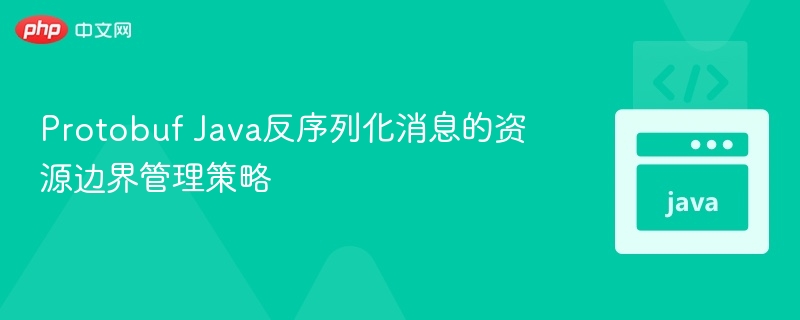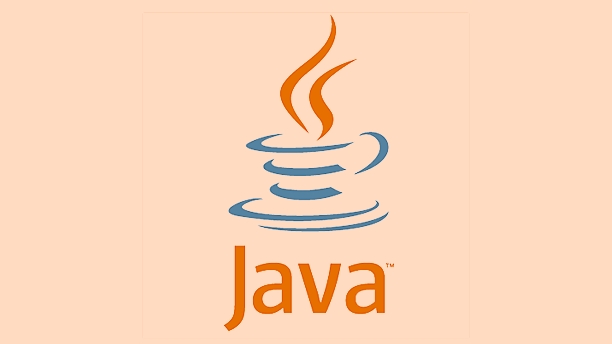java泛型实例代码分析
对于一个文章开发者来说,牢固扎实的基础是十分重要的,golang学习网就来带大家一点点的掌握基础知识点。今天本篇文章带大家了解《java泛型实例代码分析》,主要介绍了,希望对大家的知识积累有所帮助,快点收藏起来吧,否则需要时就找不到了!
先简单来段例子:
<code>public void testGenerics() {<br> Collection<Number> numbers = new ArrayList<>();<br> numbers.add(1); // ok<br><br> Collection<?> tmp = numbers;<br> // don't work, you don't know what type 'tmp' obviously contains<br>// tmp.add(1);<br><br> Collection<? extends Number> tmp2 = numbers;<br> // don't work, you don't know what subtype 'tmp2' obviously contains<br>// tmp2.add(1);<br><br> Collection<Integer> integers = new ArrayList<>();<br> tmp = integers;<br> tmp2 = integers;<br><br> Collection<String> strings = new ArrayList<>();<br> tmp = strings;<br>// tmp2 = strings; // don't work<br> }<br></code>这个问题其实有点反人类,估计大部分人(包括我)对这种转换的第一反应肯定是“当然是对的。。”,说下我的理解:
Collection
:表示这个Collection里包含的都是Number类型的对象,可以是Integer/Long/Float,因为编译器可以判断obj instanceof Number == true; Collection:表示这个Collection是Number类型的“某个子类型”的Collection实例,可以是Collection
/Collection ,所以调用tmp.add(1)是不行的,因为编译器不知道这个tmp包含的元素到底是Number的哪个子类型,编译器无法判断obj instanceof UnknownType的结果; Collection
,这个E类型是“一个”具体的类型,而不能是某个parent的多个子类型。
说到为什么在不明确类型的情况下不能允许写操作,那是为了运行期的安全,举个例子:
<code>public void testGenerics2() {<br> List<Integer> integers = new ArrayList<>();<br><br> List<? extends Comparable> comparables = integers;<br> <br> integers.add("1");<br> <br> comparables.get(0).intValue(); // fail<br>}<br></code>如果comparables允许添加Comparable类型,那么运行期就有可能会抛出一些意料之外的RuntimeException,导致方法不正常结束甚至程序crash。
现在再来说说Collection
<code>public void testGenerics3() {<br> List<Integer> integers = new ArrayList<>();<br><br> List<Object> objects = integers; // don't work<br> List<?> objects1 = integers; // ok<br> }<br></code>Collection表示的范围比Collection
大; 表示任意类型集合的正确写法是Collection;
Collection
不能表示任意类型的集合。
为什么Collection
<code>public void testGenerics4() {<br> List<Integer> integers = new ArrayList<>();<br><br> List<Object> objects = new ArrayList<>();<br> // this will be ok if List<Object> equals List<?><br>// objects = strings;<br>// objects.add("1");<br>// Integer i = (Integer) objects.get(0); // and crashes<br><br> List<?> objects1 = new ArrayList<>(); // ok<br>// objects1.add("1"); // compiler will make it illegal<br> }<br></code>List
是可以往集合add数据的,因为Object是所有对象的父类,是已知类型,可以用obj instanceof Object判断; List编译器是不允许往里面丢数据的,因为不知道List到底是哪种数据类型的集合,不能用obj instanceof UnknownType判断;
?才是表示未知类型,Object表示的是已知类型;
如果List
表示任意类型,按照墨菲定律(可能会发生的事必然会发生),那么上面例子中的crash是必然会发生的。。(又是一个线上故障)
今天关于《java泛型实例代码分析》的内容就介绍到这里了,是不是学起来一目了然!想要了解更多关于java的内容请关注golang学习网公众号!
 数据库/sql Exec() 函数因连接字符串而失败
数据库/sql Exec() 函数因连接字符串而失败
- 上一篇
- 数据库/sql Exec() 函数因连接字符串而失败

- 下一篇
- 轻松掌握 HTML 文件 ZIP 压缩秘诀
-

- 文章 · java教程 | 1分钟前 |
- Protobuf Java反序列化消息的资源边界管理策略
- 246浏览 收藏
-

- 文章 · java教程 | 36分钟前 |
- 在Java中如何使用ThreadLocal实现线程局部变量_ThreadLocal类常用方法解析
- 224浏览 收藏
-

- 文章 · java教程 | 1小时前 |
- 在Eclipse中如何配置Java编译器选项
- 389浏览 收藏
-

- 文章 · java教程 | 1小时前 |
- Java如何制作一个待办事项清单_从增删改查到界面交互全过程
- 498浏览 收藏
-

- 文章 · java教程 | 1小时前 |
- 在Java中如何捕获InterruptedException并恢复线程状态_中断异常处理与线程恢复解析
- 164浏览 收藏
-

- 文章 · java教程 | 1小时前 |
- Java Switch 新写法(2025 版)怎么用?
- 264浏览 收藏
-

- 文章 · java教程 | 1小时前 |
- Java大数据处理 Java并行流与ForkJoin框架应用
- 353浏览 收藏
-

- 文章 · java教程 | 1小时前 | Java线程 线程创建
- java线程创建的几种方式
- 315浏览 收藏
-

- 文章 · java教程 | 3小时前 |
- Java中如何使用注释提高代码可读性
- 329浏览 收藏
-

- 文章 · java教程 | 3小时前 |
- 在Java中开发操作日志链路追踪_Java请求上下文设计说明
- 118浏览 收藏
-

- 文章 · java教程 | 4小时前 |
- 在Java中如何使用内部类封装逻辑与数据_OOP内部类封装实践经验
- 265浏览 收藏
-

- 前端进阶之JavaScript设计模式
- 设计模式是开发人员在软件开发过程中面临一般问题时的解决方案,代表了最佳的实践。本课程的主打内容包括JS常见设计模式以及具体应用场景,打造一站式知识长龙服务,适合有JS基础的同学学习。
- 543次学习
-

- GO语言核心编程课程
- 本课程采用真实案例,全面具体可落地,从理论到实践,一步一步将GO核心编程技术、编程思想、底层实现融会贯通,使学习者贴近时代脉搏,做IT互联网时代的弄潮儿。
- 516次学习
-

- 简单聊聊mysql8与网络通信
- 如有问题加微信:Le-studyg;在课程中,我们将首先介绍MySQL8的新特性,包括性能优化、安全增强、新数据类型等,帮助学生快速熟悉MySQL8的最新功能。接着,我们将深入解析MySQL的网络通信机制,包括协议、连接管理、数据传输等,让
- 500次学习
-

- JavaScript正则表达式基础与实战
- 在任何一门编程语言中,正则表达式,都是一项重要的知识,它提供了高效的字符串匹配与捕获机制,可以极大的简化程序设计。
- 487次学习
-

- 从零制作响应式网站—Grid布局
- 本系列教程将展示从零制作一个假想的网络科技公司官网,分为导航,轮播,关于我们,成功案例,服务流程,团队介绍,数据部分,公司动态,底部信息等内容区块。网站整体采用CSSGrid布局,支持响应式,有流畅过渡和展现动画。
- 485次学习
-

- ChatExcel酷表
- ChatExcel酷表是由北京大学团队打造的Excel聊天机器人,用自然语言操控表格,简化数据处理,告别繁琐操作,提升工作效率!适用于学生、上班族及政府人员。
- 3369次使用
-

- Any绘本
- 探索Any绘本(anypicturebook.com/zh),一款开源免费的AI绘本创作工具,基于Google Gemini与Flux AI模型,让您轻松创作个性化绘本。适用于家庭、教育、创作等多种场景,零门槛,高自由度,技术透明,本地可控。
- 3579次使用
-

- 可赞AI
- 可赞AI,AI驱动的办公可视化智能工具,助您轻松实现文本与可视化元素高效转化。无论是智能文档生成、多格式文本解析,还是一键生成专业图表、脑图、知识卡片,可赞AI都能让信息处理更清晰高效。覆盖数据汇报、会议纪要、内容营销等全场景,大幅提升办公效率,降低专业门槛,是您提升工作效率的得力助手。
- 3611次使用
-

- 星月写作
- 星月写作是国内首款聚焦中文网络小说创作的AI辅助工具,解决网文作者从构思到变现的全流程痛点。AI扫榜、专属模板、全链路适配,助力新人快速上手,资深作者效率倍增。
- 4740次使用
-

- MagicLight
- MagicLight.ai是全球首款叙事驱动型AI动画视频创作平台,专注于解决从故事想法到完整动画的全流程痛点。它通过自研AI模型,保障角色、风格、场景高度一致性,让零动画经验者也能高效产出专业级叙事内容。广泛适用于独立创作者、动画工作室、教育机构及企业营销,助您轻松实现创意落地与商业化。
- 3984次使用
-
- 提升Java功能开发效率的有力工具:微服务架构
- 2023-10-06 501浏览
-
- 掌握Java海康SDK二次开发的必备技巧
- 2023-10-01 501浏览
-
- 如何使用java实现桶排序算法
- 2023-10-03 501浏览
-
- Java开发实战经验:如何优化开发逻辑
- 2023-10-31 501浏览
-
- 如何使用Java中的Math.max()方法比较两个数的大小?
- 2023-11-18 501浏览




